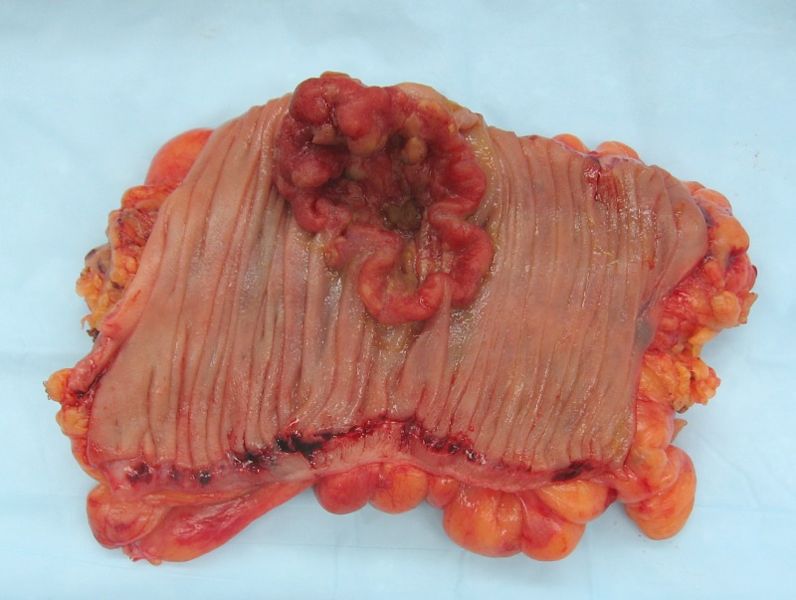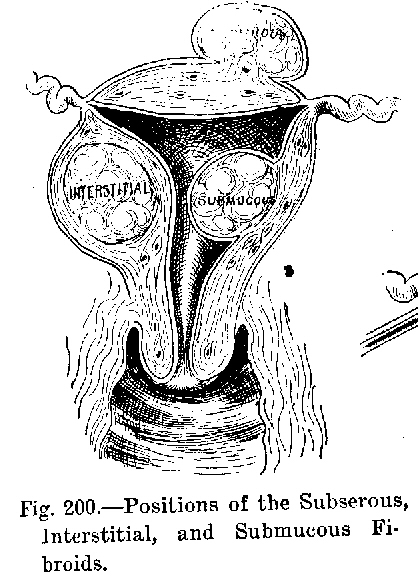Neoplasm
| Neoplasm | |
 | |
|---|---|
| Colectomy specimen containing a malignant neoplasm, namely an invasive colorectal carcinoma (the crater-like, reddish, irregularly-shaped tumor). | |
| ICD-10 | C00-D48 |
| ICD-9 | 140-239.99 |
| DiseasesDB | 28841 |
| MedlinePlus | 001310. |
| MeSH | D009369 |
|
WikiDoc Resources for Neoplasm |
|
Articles |
|---|
|
Most recent articles on Neoplasm |
|
Media |
|
Evidence Based Medicine |
|
Clinical Trials |
|
Ongoing Trials on Neoplasm at Clinical Trials.gov Clinical Trials on Neoplasm at Google
|
|
Guidelines / Policies / Govt |
|
US National Guidelines Clearinghouse on Neoplasm
|
|
Books |
|
News |
|
Commentary |
|
Definitions |
|
Patient Resources / Community |
|
Directions to Hospitals Treating Neoplasm Risk calculators and risk factors for Neoplasm
|
|
Healthcare Provider Resources |
|
Causes & Risk Factors for Neoplasm |
|
Continuing Medical Education (CME) |
|
International |
|
|
|
Business |
|
Experimental / Informatics |
Editor-In-Chief: C. Michael Gibson, M.S., M.D. [1]
Overview

Neoplasia (new growth in Greek) is the abnormal proliferation of cells, resulting in a neoplasm. [1] [2] Neoplasia is the scientific term for the group of diseases commonly called tumor or cancer. [3]
Because neoplasia includes very different diseases, it is difficult to find a definition that describe them all. The definition of the British oncologist R.A. Willis is widely cited:
A neoplasm is an abnormal mass of tissue, the growth of which exceeds and is uncoordinated with that of the normal tissues, and persists in the same excessive manner after cessation of the stimulus which evoked the change.
— [4]
Types
A neoplasm can be benign, potentially malignant (pre-cancer) or malignant (cancer). [5]
- Benign neoplasms include uterine fibroids and melanocytic nevi (skin moles). They do not transform into cancer.
- Potentially malignant neoplasms include carcinoma in situ. They do not invade and destroy but, given enough time, will transform into a cancer.
- Malignant neoplasms are commonly called cancer. They invade and destroy the surrounding tissue, may form metastases and eventually kill the host.
Difficulty of definition
A precise and all-encompassing definition of neoplasm has proven elusive. A neoplasm has been defined as an uncontrolled and progressive growth, although this definition is criticized because some neoplasms, such as nevi, are not progressive.[6]
Some sources consider a neoplasm to be synonymous with a tumor or unusual mass of tissue.[3] This is criticized because many neoplasms form no mass, including cervical intraepithelial neoplasia, anal intraepithelial neoplasia, and leukemia.
Biological properties of neoplastic cells
The structure of a neoplasm is less organized than that of the surrounding tissue.[7]
Clonality
Neoplastic tumors often contain more than one type of cell, but their initiation and continued growth is usually dependent on a single population of neoplastic cells. These cells are usually presumed to be clonal - that is, they are descended from a single progenitor cell.
The neoplastic cells typically bear common genetic or epigenetic abnormalities, an evidence of clonality. For some types of neoplasm, e.g. lymphoma and leukemia, the demonstration of clonality is now considered to be necessary (though not sufficient) to define a cellular proliferation as neoplastic.[8]
See also
References
- ↑ "What is neoplasm? Find the definition for neoplasm at WebMD". Retrieved 2008-01-08.
- ↑ Template:Dorlands
- ↑ 3.0 3.1 "Pancreas Cancer: Glossary of Terms". Retrieved 2008-01-08.
- ↑ Willis RA: The Spread of Tumors in the Human Body. London, Butterworth & Co, 1952
- ↑ "Cancer - Activity 1 - Glossary, page 4 of 5". Retrieved 2008-01-08.
- ↑ Template:Dorlands
- ↑ "What is neoplasm?". Retrieved 2008-01-08.
- ↑ Lee ES, Locker J, Nalesnik M; et al. (1995). "The association of Epstein-Barr virus with smooth-muscle tumors occurring after organ transplantation". N. Engl. J. Med. 332 (1): 19–25. doi:10.1056/NEJM199501053320104. PMID 7990861.
Template:Tumors Template:Pathology